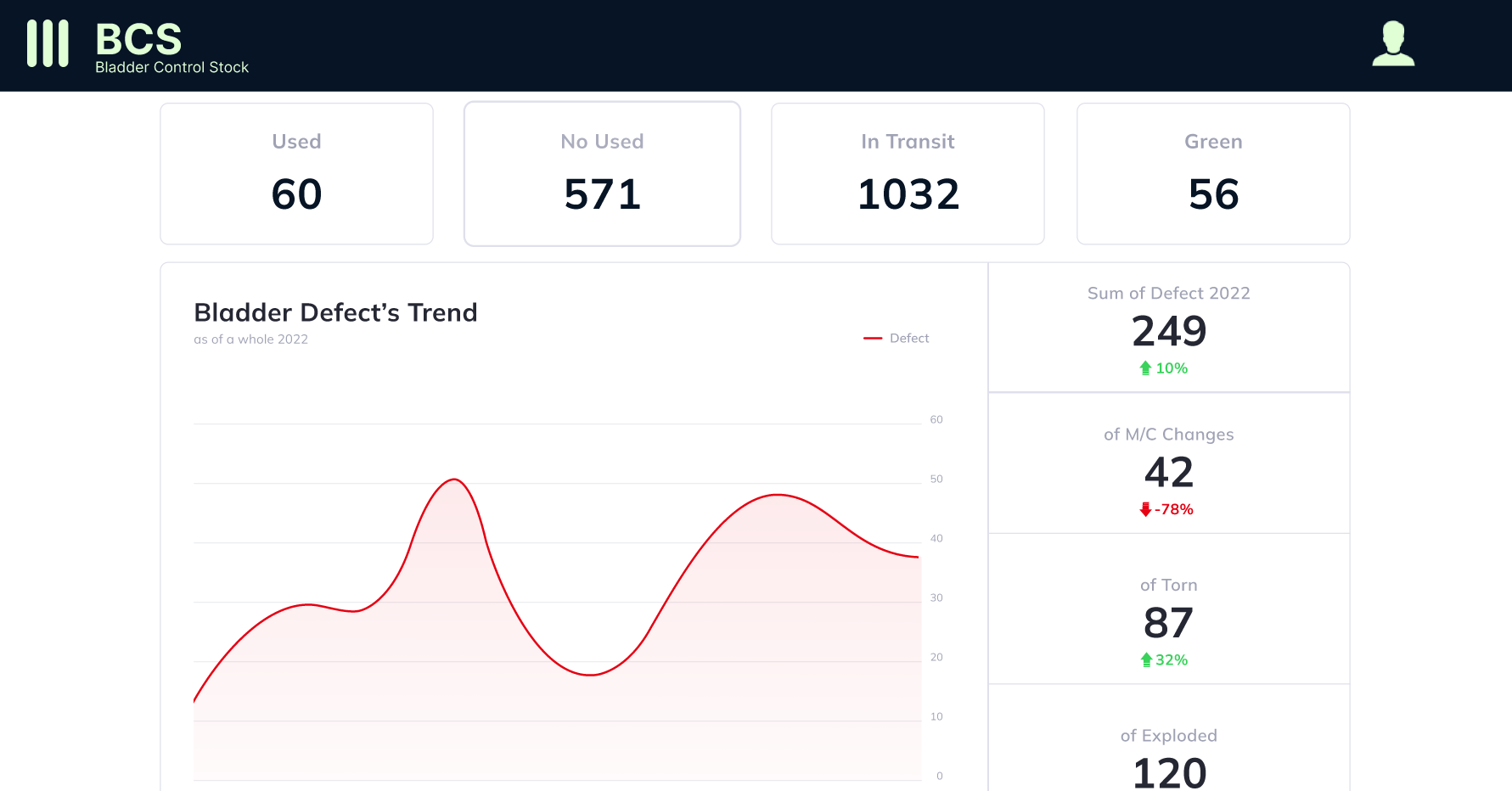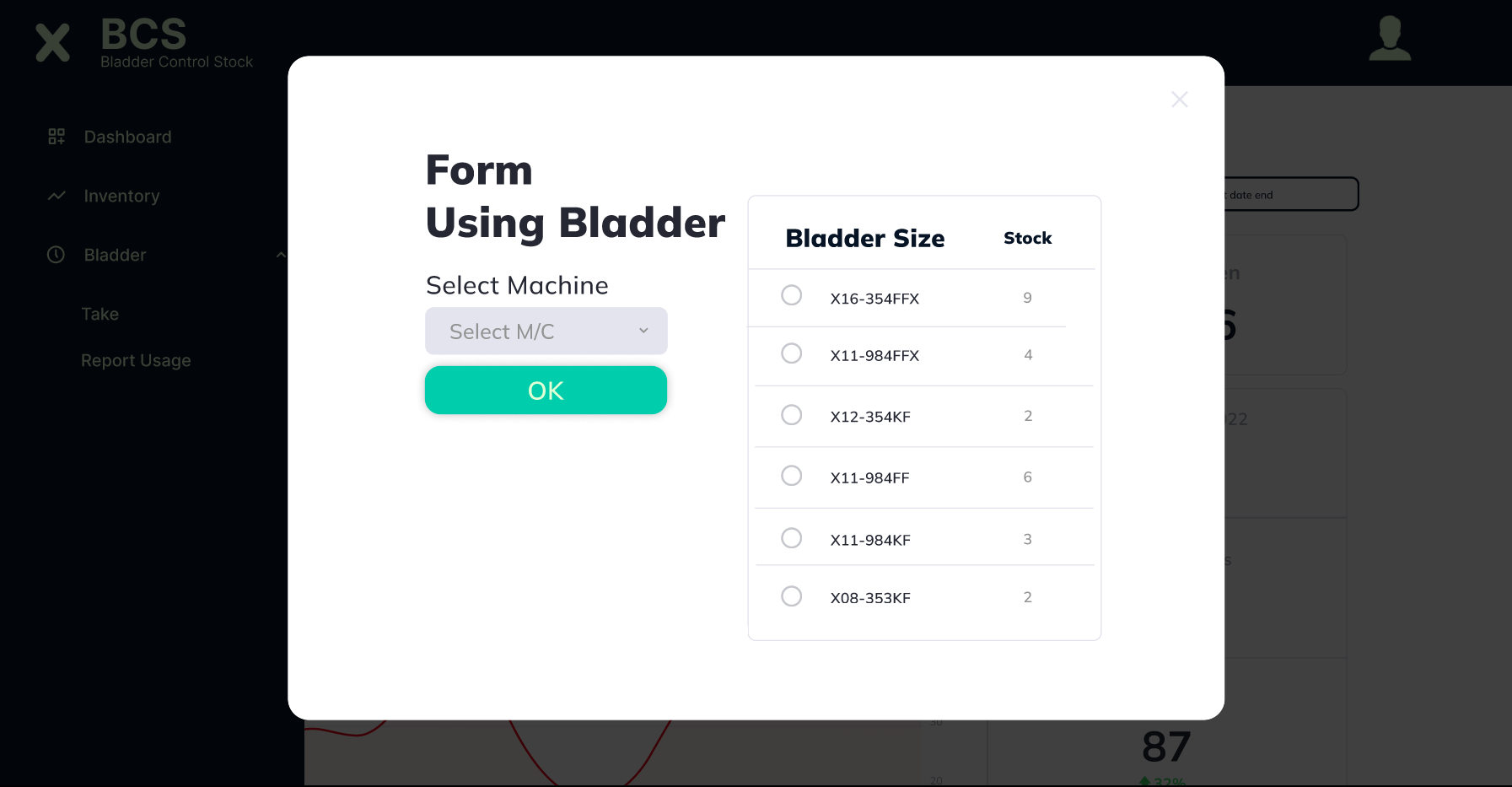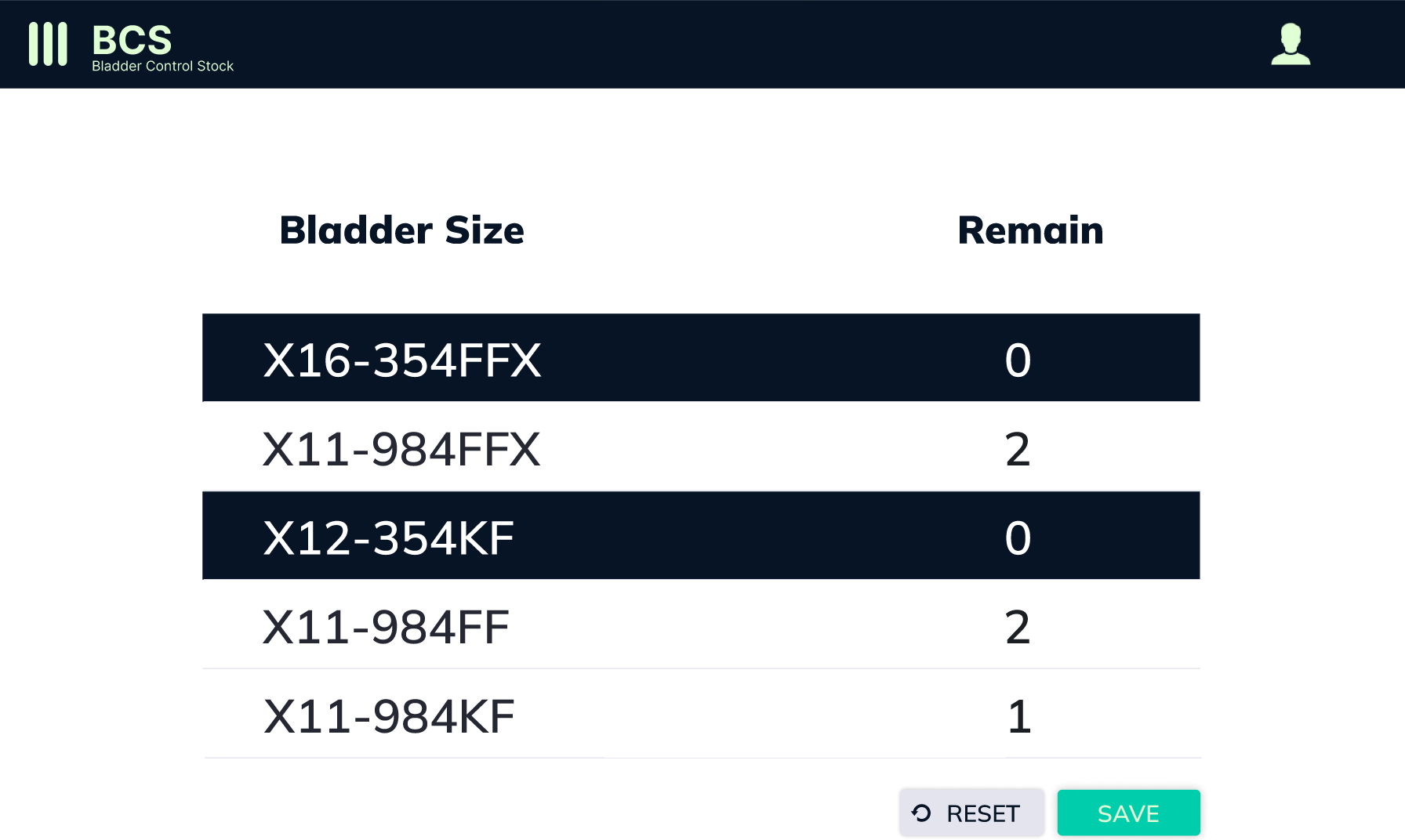Bladder Control Stock (BCS)

Background
This system analysis project was initiated in response to real-world challenges faced by the company. Prior to the project's implementation, the company encountered several significant constraints in the management and control of processes related to Bladder. Bladder is a critical component in the company's production chain, and its management and monitoring are of utmost importance. Some of the challenges identified before the project began include:
- Error-Prone Manual Processes: Previously, most of the Bladder management processes were conducted manually. Data had to be manually entered into Excel spreadsheets, which led to a high potential for errors. This not only disrupted operational efficiency but also posed the risk of financial losses.
- Limited Access and Control: The manual system did not provide sufficient visibility into Bladder stock and usage. Decision-makers often struggled to monitor and control Bladder inventory and allocations across various production locations.
- Potential Losses Due to Misuse or Irregularities: With the lack of effective control and monitoring, there was a potential for losses resulting from misuse or irregularities in Bladder management. This could include the misuse of raw materials, inefficient usage, or even the risk of theft.
- Increased Complexity: As the business grew, the level of complexity in Bladder management also increased. Manual management processes became increasingly impractical and called for a more sophisticated solution to support the company's needs.
In this context, this project was conceived to address these challenges by providing an automated, efficient, and reliable web-based solution. With the implementation of this project, the company aims to enhance Bladder management, monitoring, and control while reducing the risks of losses and human errors. Furthermore, this project supports the company's growth by providing a robust foundation for better and more efficient management.
Poroject Objectives
The main objective of this project is to create an efficient and reliable automation system for processing orders, monitoring, and inventory management of Bladder. In achieving this goal, several key aspects are the primary focus:
- Process Optimization: This project aims to optimize all processes related to Bladder, including ordering, supervision, and inventory control. By using a web-based solution, the company seeks to create a more efficient and expedited workflow.
- Enhanced Control: With the implementation of an automated system, the company aims to achieve better control over Bladder. This involves more accurate monitoring, precise allocation, and improved compliance with procedures.
- Risk Reduction: One of the main objectives of this project is to reduce the risk of losses due to misuse or irregularities in Bladder management. With a reliable system, the potential for losses can be minimized.
- Improved Efficiency: Using modern tools such as Visio, Figma, Maze, Excel, and Draw.IO, this project aims to enhance efficiency in understanding, designing, and implementing solutions. These tools assist in data collection, user interface design, process modeling, and documentation.
- Readiness for Growth: In addition to specific objectives, this project also aims to prepare the company for further growth. With a strong foundation in Bladder management, the company can better address the demands of its business growth.
Scope
As a System Analyst responsible for this analysis project, my work scope is primarily focused on analyzing system requirements. The project revolves around improving Bladder management, including order processing, supervision, and inventory. Within this scope, several key aspects involve:
- Functional and Non-Functional Requirements: My task is to identify and document both functional and non-functional requirements needed for the new system. This includes essential features that must be present (functional requirements) as well as performance, security, and scalability criteria (non-functional requirements).
- User Requirement Analysis: I conducted interviews with users who interact with the current system. I explored user complaints, desires, and expectations related to Bladder management. This helped me understand the user perspective and their needs in system improvement.
- User Interface Design (UI Design): Based on the understanding of user requirements and the required functionality, I designed a user interface (UI) that can facilitate the processing of Bladder orders, supervision, and inventory more efficiently and user-friendly. The design serves as a foundation for further development.
- Collaboration with the Development Team: After completing the UI design, I collaborated with the development team to convey the UI design and ensure they understand the UI vision and requirements. While I'm not involved in technical development, effective communication with the development team is crucial for implementing the solution correctly.
In this scope, I am not only responsible for gathering and documenting requirements but also for presenting a solution that aligns with user expectations. This ensures that the project has a solid foundation before entering the implementation phase.
Technologies Used
Project Impelementation
The project's implementation phase was driven by the application of the Design Thinking methodology. This approach placed a strong emphasis on understanding user needs, ideating solutions, and iterating to create a user-centric system. Here is an overview of the steps I took during the implementation process:
I began by immersing myself in the user's perspective, seeking a deep understanding of their requirements and pain points. Through empathetic interviews and observations, I gained insights into what the users truly needed from the system.
The next step involved defining the detailed functional and non-functional requirements based on the user-centric insights. These requirements were translated into a comprehensive list of functionalities and performance expectations.
To provide a visual representation of the system's structure, I utilized various modeling tools. These included Entity-Relationship Diagrams (ERD), Data Flow Diagrams (DFD), Use Case Diagrams, and others. These diagrams clarified data structures, information flows, and user-system interactions, all while staying aligned with the user-centric approach. The user interface (UI) design was a crucial aspect of the project. Employing the Design Thinking principle of ideation, I designed the UI to cater to user needs and preferences, ensuring that it was both intuitive and efficient. The UI design was then handed over to the development team for implementation.
Before actual development commenced, I conducted user testing of the UI prototype. This allowed us to gather valuable feedback on the design and functionality, ensuring that the final product would align with user expectations. It was essential to ensure that the system not only met functional requirements but also provided a delightful user experience.
I acted as a communication bridge between the development team and the users. This involved making sure that the development team fully comprehended the user-centric approach and needs. It also entailed facilitating effective communication between users and the development team to address queries, feedback, and potential changes.
In summary, the project's implementation phase, guided by Design Thinking, was about taking user-centric insights and turning them into a practical solution. My role as a bridge between user-centric design and development ensured a seamless transition, allowing the project to move forward cohesively and ensuring the system's successful realization.
Results: A Comprehensive Blueprint for Efficient Operations


The outcome of this project is a meticulously detailed Software Requirement Specification (SRS) document that encompasses every system requirement. The SRS serves as a guiding document for the development team, ensuring that the designed solution is implemented accurately and effectively. Additionally, this project has yielded a user interface (UI) design for the system, setting the course for the development of an intuitive and efficient user interface.
Furthermore, the adoption of cutting-edge technologies and tools underscores our commitment to harnessing the latest technological advancements in pursuit of the project's objectives. We have diligently engaged in a series of meetings and discussions with management, users, and supervisors to thoroughly understand the needs and expectations of all stakeholders involved.
It is important to note that the project documentation files are of a confidential nature and not accessible for public sharing, as they contain proprietary company information. However, the UI design concept, a critical component of the project, has been made available.